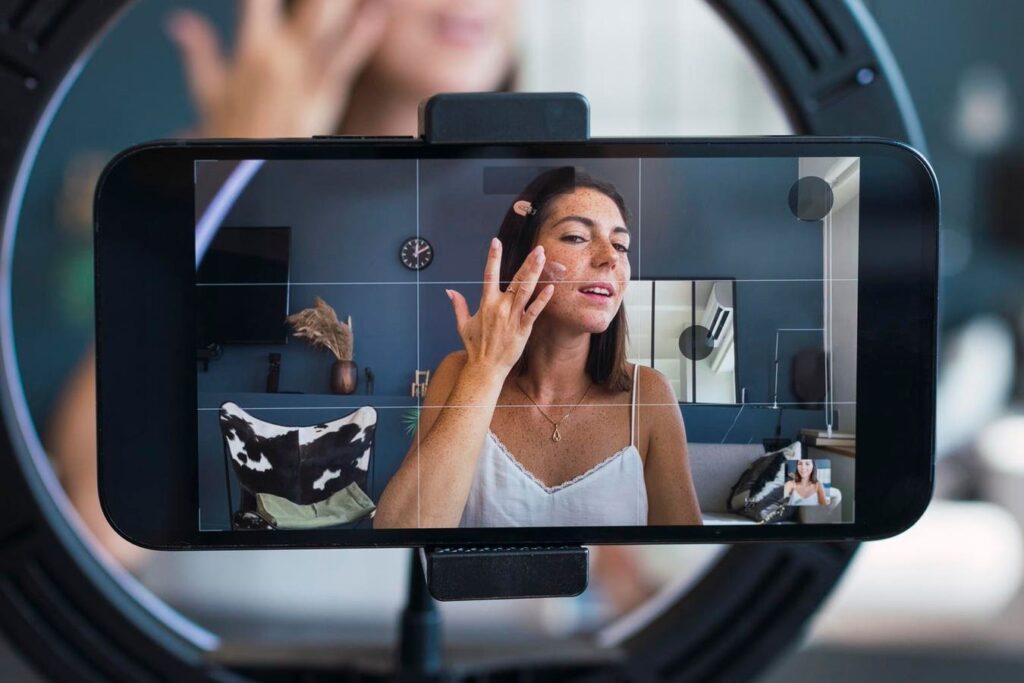By Charles Nicholls, CEO SimplicityDX Inc and Chair of The DX Academy, a think tank that researches how consumers buy online.
Social media influencers are no longer a niche phenomenon—they are a global force shaping consumer behavior. With over 50 million people worldwide identifying as influencers, and 2 million of them earning $100,000 or more annually according to Goldman Sachs, influencers have emerged as a transformative power in marketing. Whether you admire their ability to connect with audiences or question their authenticity, there’s no denying their impact.
A staggering 57% of Gen-Z (paywall) aspire to become influencers themselves, with 53% viewing it as a viable career. These numbers signify a cultural shift in how consumers discover, evaluate and decide on products. From beauty and fashion to DIY tutorials and tech reviews, influencers are becoming the trusted voices for an increasingly broad spectrum of industries.
Influencers’ Impact On Holiday Shopping
During the 2024 holiday season, influencers took on a new role: curators of holiday gift guides. According to analysts at Forrester, 43% of U.S. online adults under 34 reported that social media posts from brands influence their holiday shopping decisions. Another 25% say they’re influenced by posts from influencers. Both metrics outpace traditional advertising formats such as TV commercials, online video ads and podcasts.
This shift underscores the growing role of influencers as tastemakers who guide consumer choices, especially among younger demographics. Their reach and relatability give them an edge over more conventional advertising methods, making them indispensable for brands aiming to connect with younger, digitally native audiences.
From Celebrities To Micro-Influencers
Traditionally, brands leaned on celebrity endorsements to build prestige and reach. While A-list names still command attention, the focus has shifted toward micro-influencers—creators with smaller, more engaged followings. These influencers are often seen as authentic and relatable, fostering deeper trust with their audiences.
For brands, micro-influencers present a compelling proposition. They are often eager to collaborate, less demanding than celebrities and more accessible. This dynamic allows brands to reach highly specific audiences while maintaining manageable campaign budgets.
The TikTok Effect And The Rise Of Short-Form Video
Much of the influencer boom is tied to the explosive growth of short-form video platforms, particularly TikTok. The platform’s algorithm prioritizes engagement over follower count, enabling unknown creators to achieve viral success overnight. This dynamic has created a steady influx of new influencers and positioned TikTok as a key battleground for brands.
For marketers, the challenge lies in creating fresh, engaging content that aligns with the platform’s rapid pace. Increasingly, brands are collaborating with influencers not just for their audience but also for their content creation skills. These partnerships allow brands to produce innovative videos that resonate with users and enhance the likelihood of going viral.
The Double-Edged Sword Of Influence
While influencers hold significant sway, their impact comes with complexities. My company’s research shows that almost two-thirds of online shoppers find influencer content helpful, particularly when it comes to product reviews or demonstrations. Yet, only 8% of consumers believe influencers are completely transparent about their compensation, and only 11% completely trust influencers’ product recommendations, leading to a gap in trust.
For brands, this represents both a challenge and an opportunity. While influencers are invaluable for showcasing products in action, transparency about partnerships and compensation can help build consumer trust.
However, it’s worth noting that 9% of shoppers outright dislike influencers and view brands that collaborate with them less favorably. While this is a minority, it underscores the need for brands to carefully consider their audience and strategy when engaging influencers.
The Affiliate Marketing Opportunity
For many direct-to-consumer brands, affiliate marketing has long been a double-edged sword—a source of additional traffic but also a potential risk of cannibalizing sales. Traditionally dominated by publishers and SEO-focused content creators, affiliate programs are ripe for reinvention in the age of social media influencers.
By combining affiliate programs with influencer marketing, brands can empower creators to generate content, post organically and earn commissions on sales. This strategy can supercharge an affiliate program, enabling brands to tap into influencers’ audiences while driving measurable conversions.
Recommendations For Brands
To capitalize on the influencer marketing trend, brands should consider the following strategies:
1. Leverage micro-influencers. Focus on creators with smaller but highly engaged followings. Their relatability and cost-effectiveness make them ideal partners for most campaigns.
2. Be transparent. Clearly disclose partnerships and compensation to build consumer trust and address skepticism.
3. Invest in short-form video. Collaborate with influencers adept at creating engaging TikTok-style content. These videos are more likely to resonate with audiences and achieve virality.
4. Integrate influencers into affiliate programs. Offer influencers a commission on sales to incentivize authentic content creation and drive measurable ROI.
5. Diversify platforms. While TikTok leads the pack, explore other platforms like Instagram Reels, YouTube Shorts and emerging apps to reach broader audiences.
6. Prioritize authenticity. Work with influencers who genuinely align with your brand values and products to foster organic engagement.
Conclusion
Social media influencers have redefined the marketing landscape, offering brands new ways to connect with consumers. While challenges like transparency and trust remain, the benefits of partnering with the right influencers are undeniable.
As we move into a future where younger generations increasingly look to influencers for guidance, brands must adapt. Embracing influencer marketing—whether through micro-influencers, innovative content strategies or affiliate collaborations—can unlock new growth opportunities.
Love them or hate them, influencers are here to stay. For brands, the choice is clear: adapt and thrive in this new ecosystem or risk being left behind.
Forbes Business Council is the foremost growth and networking organization for business owners and leaders. Do I qualify?
Read the full article here

